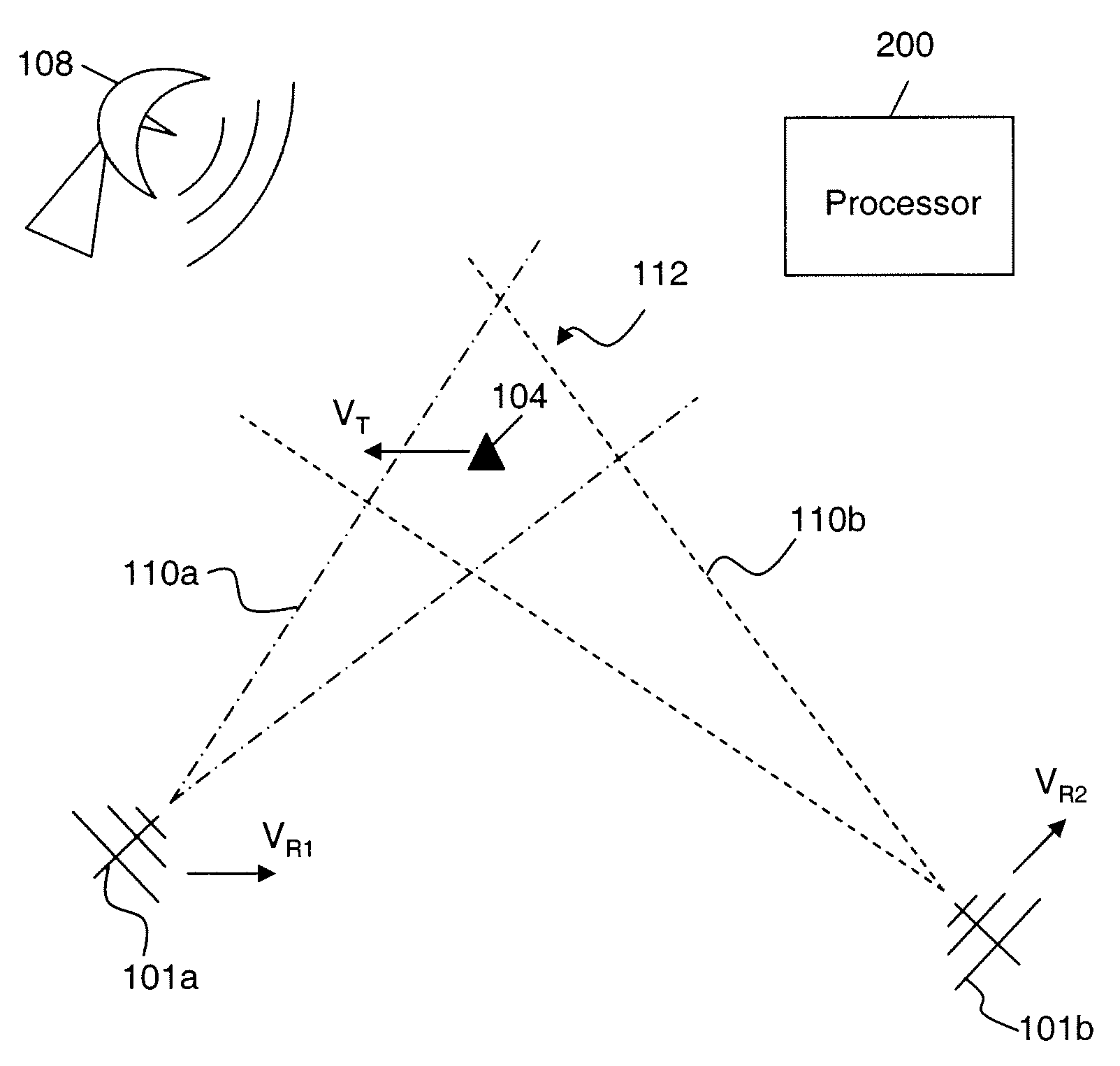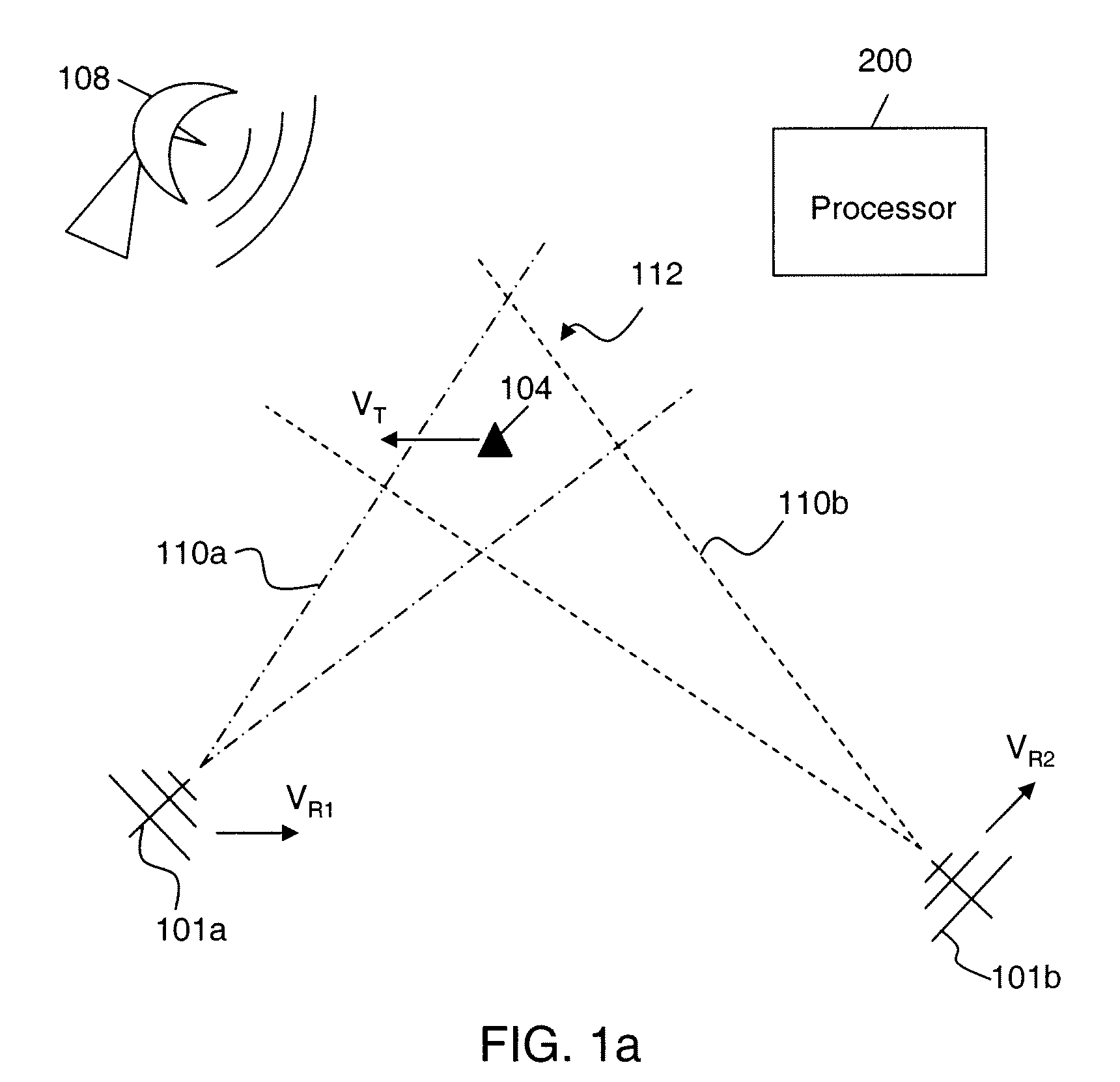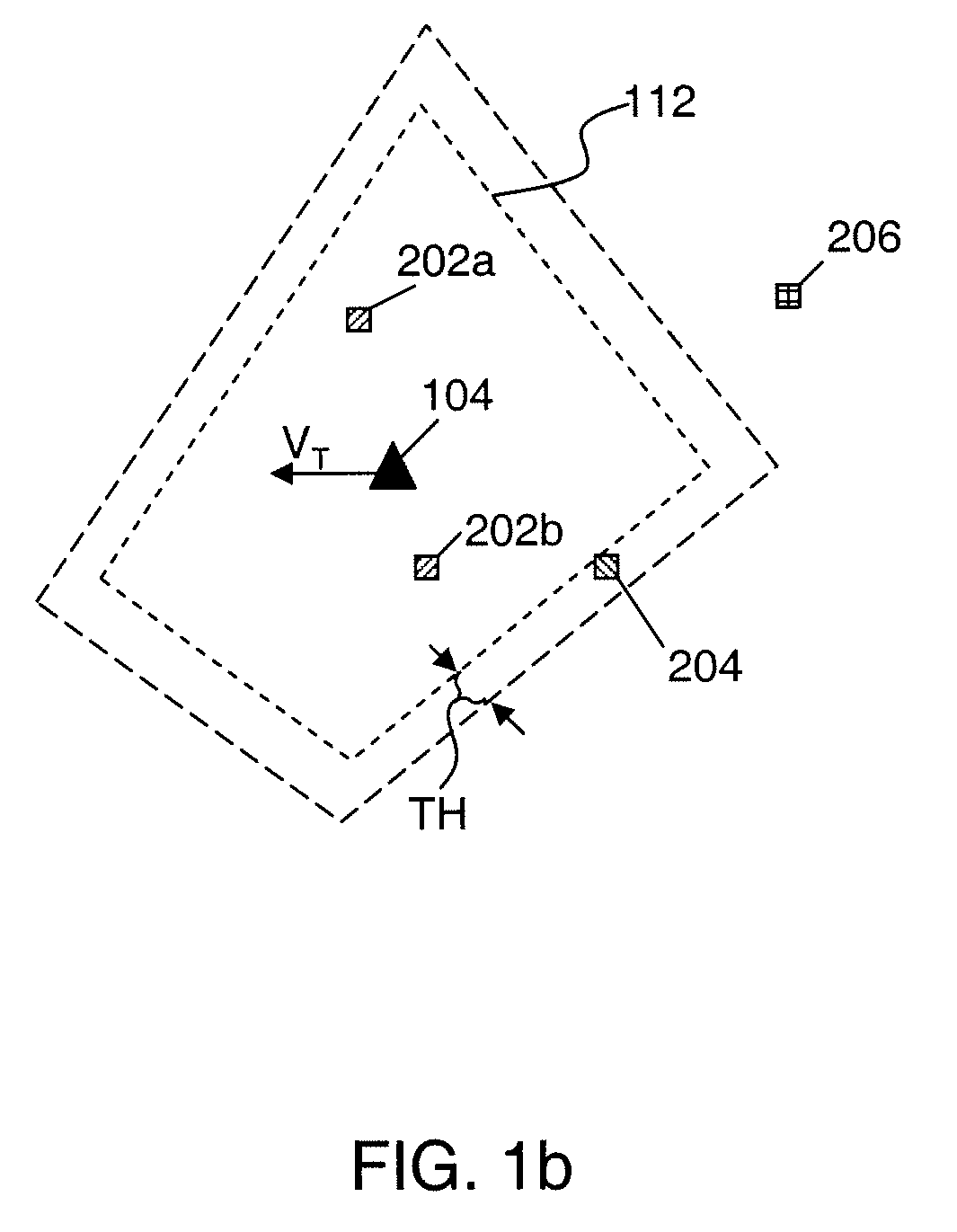System and method for precision geolocation utilizing multiple sensing modalities
a technology of multiple sensing modes and geolocation algorithms, applied in the field of radio frequency signal emitter geolocation systems, can solve the problems of not being able to adequately handle the problem, not being able to determine the geolocation of moving signal emitters by using currently known tdoa/fdoa techniques alone, and being very sensitive to signal emitter velocity induced errors. to achieve the effect of improving the accuracy of tdoa/fdoa techniques
- Summary
- Abstract
- Description
- Claims
- Application Information
AI Technical Summary
Benefits of technology
Problems solved by technology
Method used
Image
Examples
application example 1
[0043]The following example illustrates an application of the embodiments of the present invention.
[0044]Referring to FIG. 3, two aircraft 302 and 304 each have signals intelligence (SIGINT) sensors capable of measuring time of arrival. At an initial time “0,” the target 306, which has a velocity of 15 km / hr at a 30 degree angle, is at a range of R1 and R2 from aircraft 302 and 304, respectively. At this time, each aircraft 302 and 304 has a speed of 900 km / hr. One of the aircraft, for example, aircraft 304, is equipped with a GMTI radar, and makes a single measurement of the target 306 with a range accuracy of 20 m, a cross-range accuracy of 100 m, and a range rate accuracy of 0.5 m / s. Further, the aircraft 302 and 304 utilize their SIGINT sensors to measure the TDOA with an accuracy of 10 ns, and a revisit time of 5 s. Observable data from two aircraft are combined in accordance an exemplary embodiment of the invention. That is, the GMTI measurement from aircraft 304 is combined w...
application example 2
[0046]Assuming a scenario where it is desired to rapidly determine the location of a mobile terminal (e.g. a mobile phone) of interest. When the mobile terminal is operating, multiple airborne signal collection platforms (hereinafter “platforms”) receive an RF transmission emitted from the mobile terminal. Then each of the signal collection platforms performs DF LOB which is exchanged between the platforms via air-to-air links. The intersection of the DF LOBs forms a polygon in which the mobile terminal lies. Subsequent DF LOBs may be processed the same way forming a sequence of polygons. The outline of the polygons and signal information of the RF transmission are displayed to the operator of the system through a suitable display. Further, the system automatically looks for any existing track within the polygons. For the convenience of description, the following description assumes only one polygon and no track being detected.
[0047]Each platform that has visibility to the polygon c...
PUM
 Login to View More
Login to View More Abstract
Description
Claims
Application Information
 Login to View More
Login to View More - R&D
- Intellectual Property
- Life Sciences
- Materials
- Tech Scout
- Unparalleled Data Quality
- Higher Quality Content
- 60% Fewer Hallucinations
Browse by: Latest US Patents, China's latest patents, Technical Efficacy Thesaurus, Application Domain, Technology Topic, Popular Technical Reports.
© 2025 PatSnap. All rights reserved.Legal|Privacy policy|Modern Slavery Act Transparency Statement|Sitemap|About US| Contact US: help@patsnap.com



